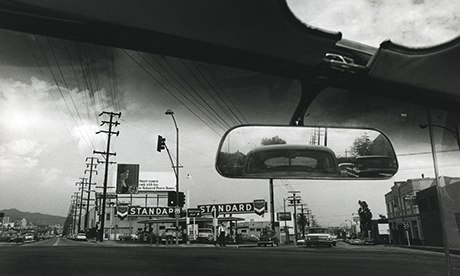
More than 400 previously unseen photographs from the 1960s, which were discovered in cardboard boxes after the death of the actor Dennis Hopper, are to go on display in Britain for the first time.
The Royal Academy of Arts on Friday announced details of an exhibition called Dennis Hopper: The Lost Album.
Hopper is best known as a hell-raising actor and director with films such as Easy Rider, Apocalypse Now and Blue Velvet. But he was also a respected artist and photographer.
The RA's director of exhibitions, Kathleen Soriano, said the discovery of the boxes by his family, after his death in 2010, revealed "just how obsessively Hopper took photographs with a 35mm Nikon camera that his wife gave him after their house, with all his paintings in it, was destroyed by fire in 1961".
Hopper took photographs of everything. There will be "lots of hippies and Hells Angels" in the show, said Soriano, as well as pictures of artists and actors including Andy Warhol, Robert Rauschenberg and Paul Newman. He was also witness to major social and political events, not least Martin Luther King's civil rights march from Selma to Montgomery in Alabama in 1965.
The Hopper show was first seen in Berlin last year and will be staged in the RA's Burlington Gardens galleries between June and August next year.
As well as the RA's annual Summer Exhibition, now in its 246th year, there will be two big shows in its main galleries.
The first will be a major architecture exhibition for which seven architectural practices have been commissioned with a brief to create site-specific installations that "evoke the experience and power of architecture".
In September, the 68-year-old German artist Anselm Kiefer will get his first significant retrospective in Britain, a show that Soriano said she had been working on with the artist for three years. It will cover Kiefer's entire career and range from delicate watercolours to monumental sculptures – and include new commissions and installations.
Kiefer currently works out of a huge warehouse just outside Paris. "It feels like the size of three aircraft hangars," said Soriano who called him one of the "our greatest living artists".
Architecture and Kiefer will sandwich what is the oldest open art competition in the world, the Summer Exhibition which next year crashes in to the modern age – the first round submissions will be entered and judged digitally, rather than the usual system whereby between 10,000-12,000 works of art are taken or sent physically to the RA.
The first submissions will then be whittled down to 3-4,000 where they will be judged in the flesh.
The smaller Sackler Galleries will next year be filled with three shows. From March to June there will be an exhibition of 16th century chiaroscuro woodcuts from two collections – the Albertina Museum in Vienna and the personal collection of the artist Georg Baselitz.
In the summer there will be a show of modern South American art, from the 1930s to the 1970s and including artists from Uruguay, Brazil and Venezuela. And in October there will be the first UK exhibition showcasing the art of the 16th century Bergamo artist Giovanni Battista Moroni, a man considered one of the most important artists of the northern Italian Renaissance and perhaps one of the greatest portraitists of all time.
Also in the Burlington Gardens galleries will be the first British museum show devoted to the always visually arresting Moscow art collective AES+F, which consists of artists Tatiana Arzamasova, Lev Evzovich, Evgeny Svyatsky and Vladimir Fridkes. They will show a trilogy of video installations called The Liminal Space Trilogy which explores themes of decadence, disaster and ruined beauty.

